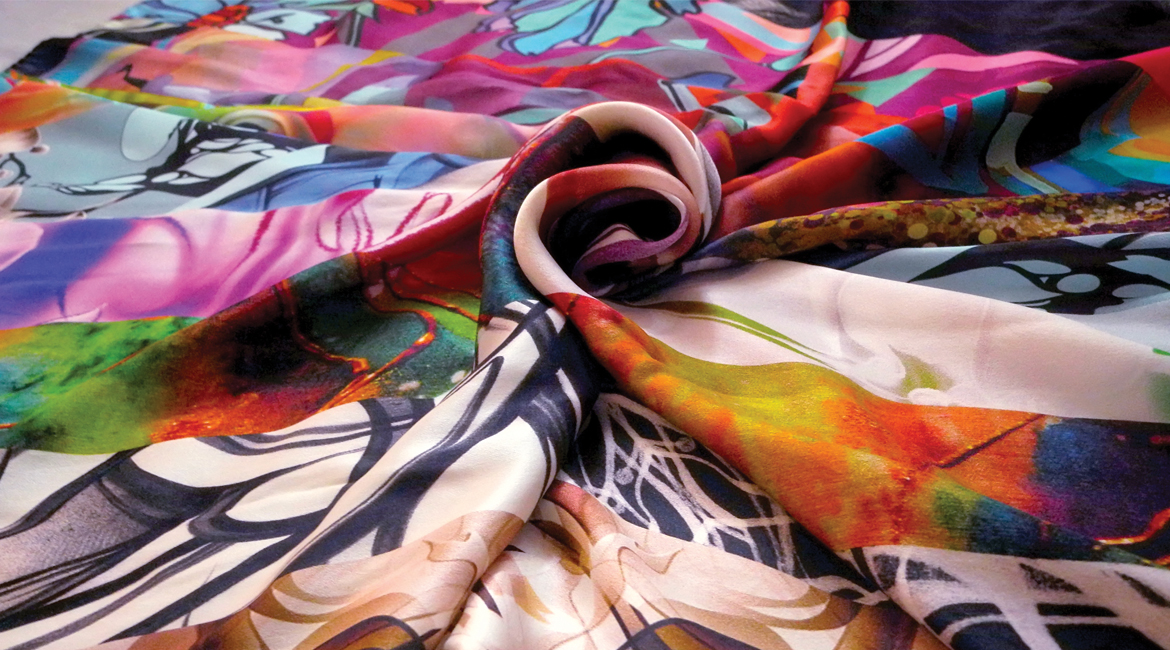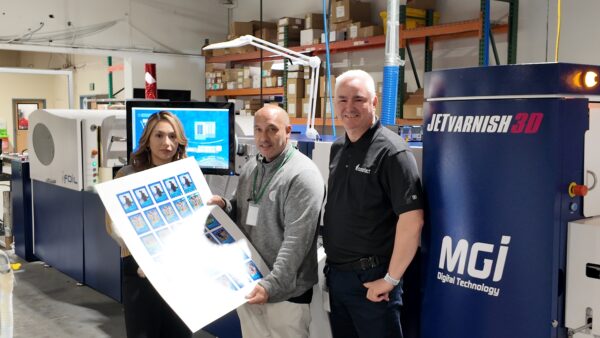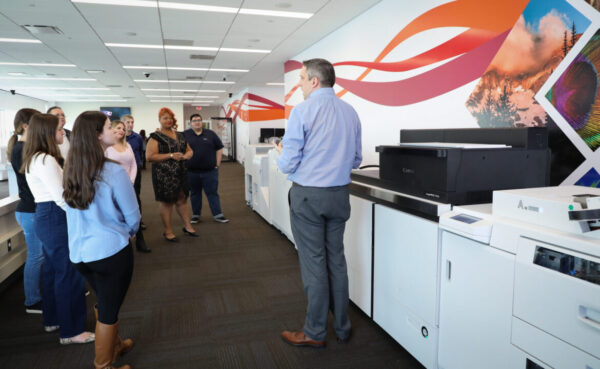We know you all have read enough written by us to understand that we believe production print is for dealers here and now. Why have we been so insistent in our coverage that this is the way to go for dealers? We never ever said that this is the last step in diversifying a dealer’s business. It is just the beginning of a long road to diversification. We are really talking about the necessary moves to make a dealership a sustainable business.
Success in cut sheet production gives you access and the opportunity to take on other growth-oriented businesses. Not one, not two, not three, but four. They are:
- Wide and Large Format
- Labeling
- Packaging
- Textile Printing
Dealers are already doing substantial business with Canon, Konica Minolta, Kyocera, and Ricoh, which offer particularly good cut-sheet printers. Those dealers are in an excellent position to move into three of the four market segments we mentioned. They cannot do textiles, at least not yet.
We failed to include Xerox because we are unsure if they will take on a textile printing line. If Fujifilm enters that space, we can include them. For now, let’s focus on the Japanese copier manufacturers who dominate the independent dealer channel.
Here Come the Textile Printers
The big question is, who will sell textile printers to dealers? Are those that can provide textile printers aware of the marketing support dealers must have to be successful? Do they recognize that those dealers taking on textile printing will need their subject matter experts within their businesses to have additional training? These are important questions. We respond by saying hell yes to all. Here is why.
The manufacturers capable of being the first to approach dealers will be Epson, Konica Minolta, Kyocera, and Ricoh. All have current products that print on textiles. We believe Canon will acquire a textile printing company no later than 2026.
Four copier manufacturers are already into textile printing, and a fifth will join them. This prognostication about Canon is merely my opinion. The other four are already selling wide format and production print devices to dealers. They know the kind of support dealers will need to make textile printing a successful effort.
Bear in mind that those Japanese manufacturers will sell textile printing direct first and establish an organization that can support the sale of textile printing and then move into the dealer channel.
In October, Kyocera Corporation released an Integrated Report 2024. This treatise shows the company’s progress toward obtaining a carbon-neutral society and addressing social issues. The intent is to enhance corporate value and expand human capital management. The following is a quote from the report.
“This report introduces FOREARTH, Kyocera’s Textile Inkjet Printer that produces elegant fabrics while helping lower the environmental impact of the fashion and textile industries by reducing water usage to as close as possible to zero with a unique Water Free Concept.”
“It also showcases Kyocera’s value creation strategy for developing new businesses through a three-phase process of opportunity identification, business development, and commercialization.”
Those two paragraphs convey a message that The Cannata Report is committed to communicating and endorsing for the rest of this decade. The Integrated Report 2024 further conveys that this is not a single objective plan or focus on textiles to make a splash in something that generates additional revenue and profit opportunities.
What we are discussing here is their commitment to the future. Kyocera is telling us that they are addressing other critical issues. These include new electric power services using solar and fuel cells and storage batteries to reduce power or even eliminate power shortages. We urge you to read the original report.
What’s Kyocera Up to?
You may ask yourself a simple question, which would be a good one. What is Kyocera doing here, and why?
It is no secret that Kyocera has been having a tough time because of the downturn in ceramic usage. They fully understand the need to diversify. When CJ and I visited Kyocera Japan in 2014, we asked if they planned to enter the production print space. They said yes, utilizing their depth of knowledge in inkjet. Five years later, it was a reality.
Kyocera introduced the C15000 in November 2019. They labeled it the TASKalfa Pro 15000c, which produces color at 1½ cents per copy. The marketing approach was for direct mail and transactional variable data work. The TASKalfa Pro C15000c has a unique marketing position in the education segment here in the U.S. Education does not require the graphic capabilities of other segments of the print world. That 1½ cent for color is enjoying tremendous success because of it.
We make no secret our respect for Kyocera, which has taken market share from HP and Lexmark in the A4 dealer world. Their A3 is highly competitive, and as we have already noted, they are successfully penetrating the print production market. Who wants to bet against this company when they get around to releasing their textile printers?
Keep an Eye on Konica Minolta
Stay tuned because the other companies we mentioned are already into textile printing. We believe they will introduce their versions of this new opportunity for dealers. We also believe Konica Minolta will be a major player in textile printing. That’s because they have a line of products and have been selling them for about 10 years. Second, they hired the smartest sales executive in the United States in industrial production print, Frank Mallozzi. They also had already acquired an Italian textile company Verga in October 2014. Konica Minolta is not a newcomer to this business. We know Frank quite well, and he is assembling a team that will eventually oversee sales and marketing for industrial print products.
Add to that John Fulena, Konica Minolta’s current vice president of production and industrial printing, dealer sales. He knows how to collaborate with dealers when employing the latest developments in production print technology.





